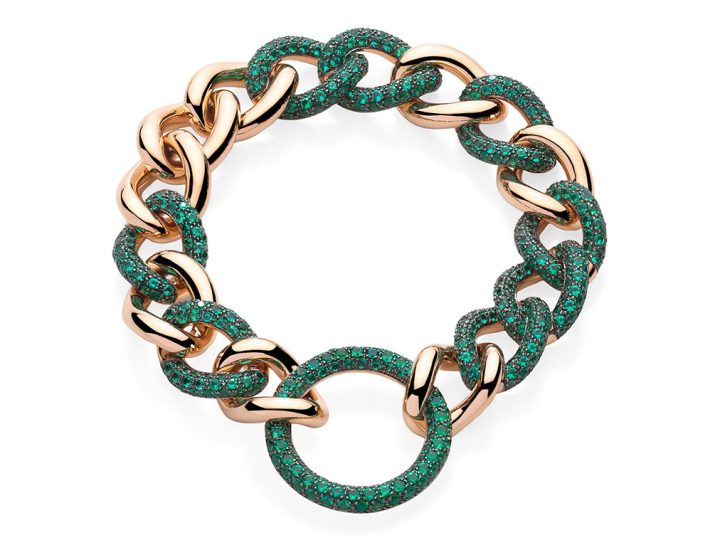When, in 1868, Florentine Ariosto Jones founded the watch company bearing his name in Schaffhausen, Switzerland, he probably had no idea it would be the beginning of a story that would lead to the birth of one of the most famous and coveted brands in the world, IWC. The peculiar thing is that this man, born in 1841 in New Hampshire, United States, had decided to establish his own company in Switzerland – without doubt due to the illustrious history the country had in watchmaking, but also for another more current reason: labour costs in Europe were lower than in the United States. Jones arrived in the Old Continent in 1867, after having fought in the American Civil War; at the time of his enlistment, he had declared watchmaking as his profession. That is why, at the end of the hostilities, he decided to focus on Switzerland, the right place to build his company, using the so-called “American system” for manufacturing watches.

It was a system called “armory system”, originally developed for the production of armaments for the federal arsenals, which required interchangeable and high-precision components. Characteristics that made it also applicable to the watch sector; which had to meet the same requirements. Schaffhausen’s decision was a natural one; the city of the same name actually rises at the famous waterfalls of the Rhine, whose power began in those years to be exploited for the production of hydroelectric energy, used to power the many industries that stood along the river: So, it all started from there. A clear corporate vision, previous experience in the sector, a strong entrepreneurial spirit and a perfect place to give shape to all this, thanks to the help of nature: an incredible combination that spawned in 1868 the company that, a few years later; would change its name from F. A. Jones & Co. to International Watch Company, more profitable as a brand in what, already at that time, could be defined as marketing. There is still so much more to say about Florentine Ariosto Jones personal and professional story, from the development of new components for watch mechanisms up to his return, in 1876, to the United States, where he died in 1916. What matters is the legacy that continues to this day and bears the name of IWC, which in company naming still proudly contains the word Schaffhausen, the city still home to its headguarters. Acquired in 2000 by Richemont, which took over 100% of it then owned by the Germans of Mannesmann AG, today IWC is one of the leading brands of the Swiss financial group and is divided into five main collections, each of which has an important place not only in the history of the company, but also in the general history of watchmaking: Pilot’s Watch, Portugieser, Portofino, Ingenieur and Aquatimer: Pilot’s Watches are perhaps the watches with which the brand most closely identifies. There is actually a longstanding link between IWC and aviation as it dates back to 1936, when the “Special Pilot’s Watch” was developed by the children of the then owner of the brand, Ernst Jakob Homberger: They both were passionate about flying and knew what technical features a pilot’s watch had to have. Today IWC Pilots equip the elite squadrons of several air forces, starting with the US Air Force and its famous Top Gun Academy, which trains some of the best fighter pilots in the world. Within the Pilot collection, the icon is undoubtedly the Big Pilot’s Watch. A/ways recognisable for its simple dial and for the generous size of the case, 46 mm, for some years it has passed to the more “urban” 43 mm, still remaining a symbol of the brand.

The Portugieser collection is, for its part, one of /WC’s oldest, most famous and elegant. It originated in the late 1930s, when the brand created wristwatches for two Portuguese dealers using “savonnette” pocket movements, which made them larger and more striking than normal, as well as extremely precise. The collection went into production in 1939 and has since been a kind of training ground for the Swiss brand, in which to use some of the finest complications of haute horlogerie. Complete and perpetual calendars, tourbillons, automatic winding chronographs, moon phases have livened up the Portugieser dials and cases especially in recent years, but without the collection losing its distinctive aesthetic and functional traits, dating back to the 1930s: remarkable case dimensions, sober but legible Arabic numerals, chemin de fer small parts and gladio hands.
Ingenieur; on the other hand, is the most technical line, the one that already in the name reveals its vocation to take technological solutions to the extreme aimed at watch precision and reliability It was created in the 1950s, with the legendary 666 model whose movement was called upon to solve a problem that was becoming more and more common: the presence of magnetic fields, both in industry and in everyday life, which compromised the running accuracy of watches. Thanks to a soft iron cage to protect the caliber; the watch was immune from that nefarious influence; a solution still widely used today, not only by /WC. The Ingenieur collection is perhaps the one that, over the years, has undergone the greatest evolution in terms of design, today reaching the most recent models presented at Watches and Wonders last April. The Ingenieur Automatic 40 has stripped away the superfluous to return to basics, with a renewed movement and a dial with a fascinating aesthetic, especially in the Aqua colour version, the most sought after by enthusiasts.
The Portofino and Aquatimer collections are the ones that IWC has not changed for the longest time and, each in its own way, remains a symbol for the brand. Portofino has been synonymous with elegance, measure and understatement for over thirty years.

Classically designed cases, sober and clean lines, precious materials are combined with timeless time-only watches, as well as with excellent complications such as the tourbillon, moon phases and retrograde indications. Aquatimer surfaced in the 1960s, when diving sports began to become popular and divers needed robust, precise and professional watches to entrust their lives to once under water. The Aquatimer has all these features: generously sized case, waterproofing up to 30 bar; large hands and luminescent stick indexes for perfect visibility even underwater: A watch that gives value to its link with the oceans even with important partnerships such as that with Cousteau Divers, a scientific programme that studies the effects of climate change by measuring the temperature below the surface of the ocean, combining data from precision sensors with measurements made by thousands of amateur divers.
IWC also has a strong bond with Italian watchmaking enthusiasts and with our country This is demonstrated by the recent opening of the new boutique in Milan, in Via Montenapoleone. A space that no longer extends in, as in the previous location, but across, with watch display cabinets that welcome the customer along the walls and on special islands. A large counter with displays is intended for the first contact with watches, while another station is designed for customers who want to deepen their knowledge of particular models.
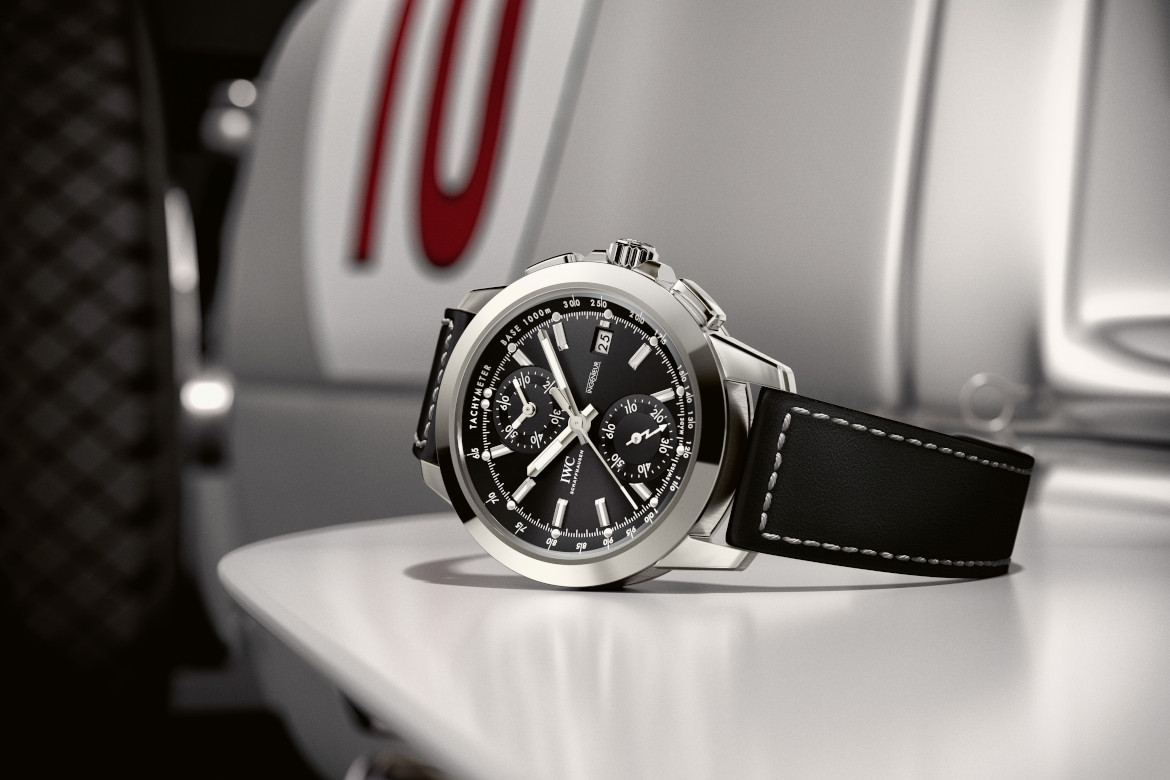
To the back, a lounge with tables and sofas is the most exclusive area of the boutique and is overlooked on a wall by the reproduction of the caliber of a perpetual calendar of the brand. A living room, rather than a boutique, which showcases Swiss expertise in the most refined Italian style, to strengthen the relationship between the Bel Paese and the brand.
We wrote it at the beginning and we reiterate it at the end. It is likely that, by indicating in the business plan of E A. Jones & Co. as the company’s mission that of “combining all the excellence of the American mechanised production system with the most skilled Swiss manual work*, Mr Jones wanted to create a company destined to last. Today, after 155 years, we can say that he has succeeded, perhaps beyond his expectations. For the pleasure and luck of those who make beautiful watchmaking a way of life.
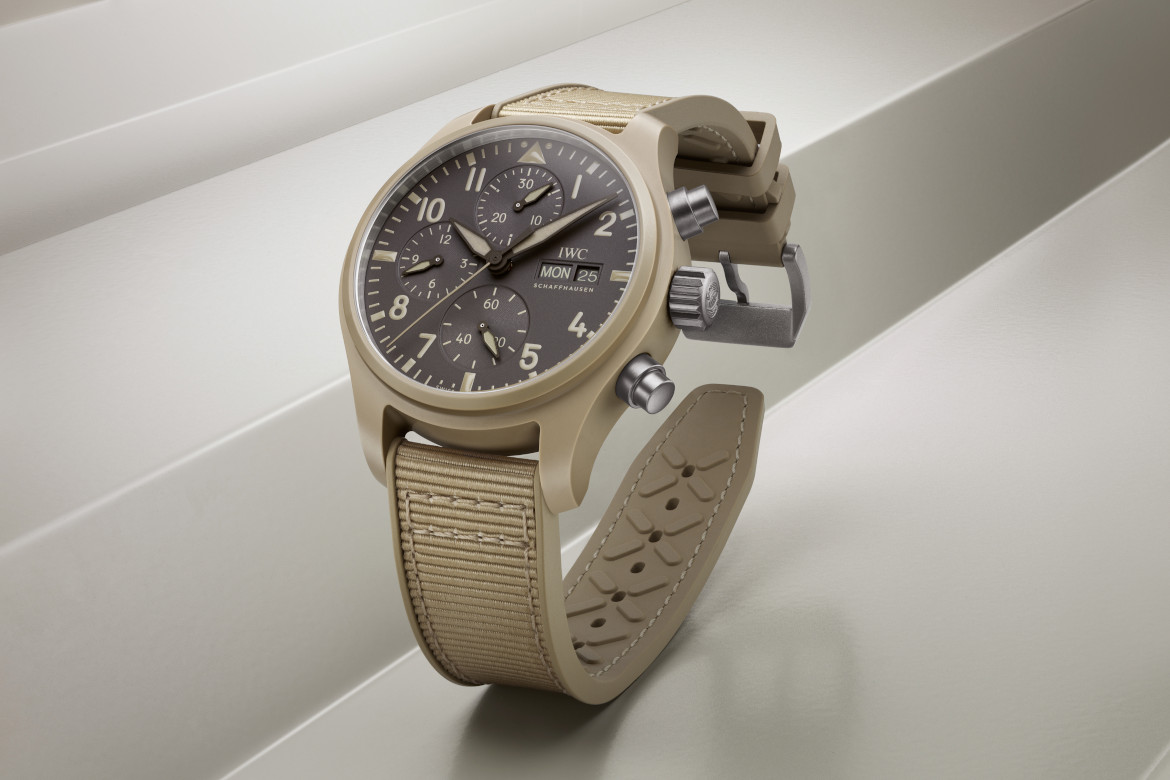
IWC
Quando, nel 1868, Florentine Ariosto Jones fondò a Schaffhausen, in Svizzera, l’azienda orologiera che portava il suo nome, probabilmente non pensava di dare il via a una storia industriale che avrebbe portato alla nascita di uno dei marchi più celebri e ambiti del mondo, IWC. La cosa singolare sta nel fatto che quest’uomo, nato nel 1841 nel New Hampshire, Stati Uniti, aveva deciso di costituire in Svizzera la propria azienda sicuramente per via della storia di eccellenza che il Paese aveva nella costruzione di orologi, ma anche per un altro motivo, molto moderno: in Europa il costo del lavoro era inferiore rispetto agli Usa. Jones era arrivato nel Vecchio Continente nel 1867, dopo aver combattuto nella guerra di secessione americana; al momento dell’arruolamento, aveva dichiarato come professione svolta quella di orologiaio. Ecco perché, alla fine delle ostilità, puntò deciso verso la Svizzera, il posto giusto dove costruire la propria azienda, impiegando il cosiddetto “sistema americano” per la fabbricazione degli orologi. Si trattava di un sistema chiamato “armory system”, sviluppato originariamente per la produzione di armamenti per gli arsenali federali, che richiedeva componenti intercambiabili e di alta precisione. Caratteristiche che lo rendevano applicabile anche al settore orologiero, che doveva rispondere agli stessi requisiti. La scelta di Schaffhausen fu piuttosto naturale; la città dell’omonimo cantone sorge infatti in corrispondenza delle celebri cascate del Reno, la cui potenza cominciava in quegli anni a essere sfruttata per la produzione di energia idroelettrica, utilizzata per alimentare le tante industrie che sorgevano lungo il fiume. Partì tutto da lì, dunque.
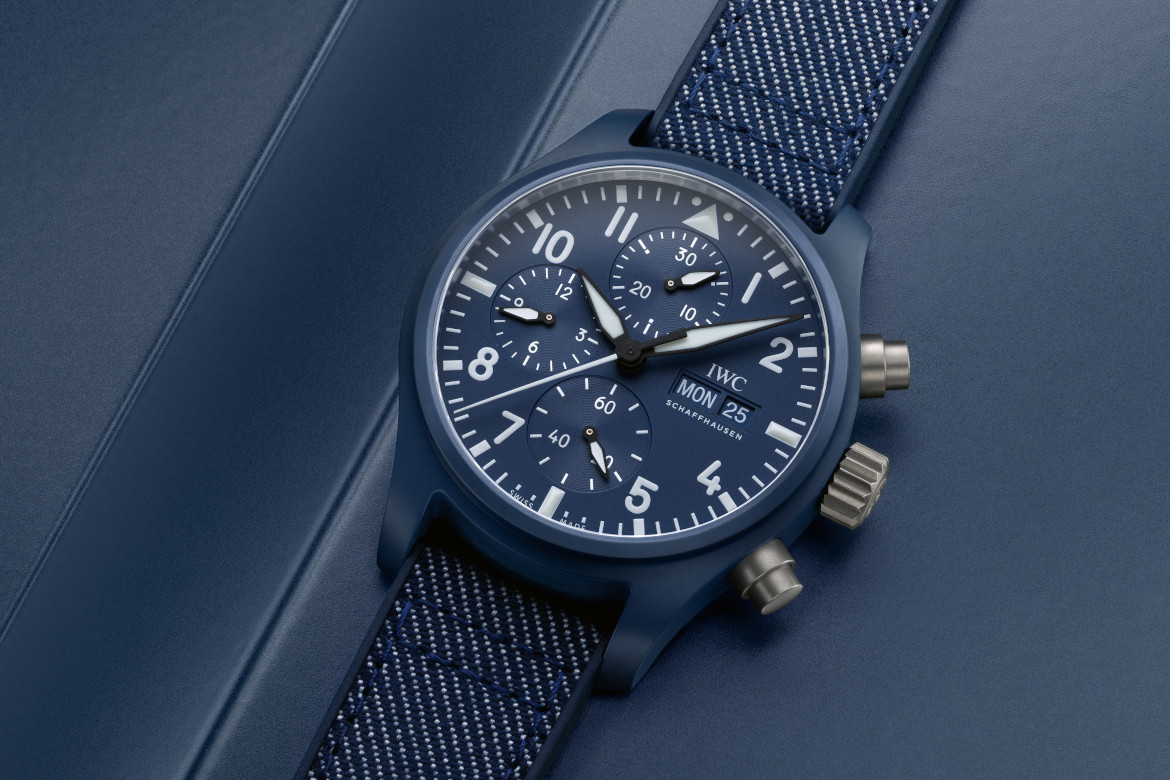
Una chiara visione aziendale, un’esperienza pregressa nel settore, un forte spirito imprenditoriale e un luogo perfetto in cui dare forma a tutto questo, grazie all’aiuto da parte della natura: una combinazione incredibile che diede vita nel 1868 all’impresa che, di lì a pochi anni, avrebbe cambiato il proprio nome da F. A. Jones & Co. a International Watch Company, più spendibile come marchio in quello che, già all’epoca, si poteva definire come marketing. Della storia umana e professionale di Florentine Ariosto Jones si potrebbe raccontare ancora tanto, dallo sviluppo di nuovi componenti per i meccanismi degli orologi al suo ritorno, nel 1876, negli Stati Uniti, dove morì nel 1916. Ciò che conta è l’eredità che continua fino ai nostri giorni e che porta il nome di IWC, che nel naming aziendale racchiude ancora oggi con orgoglio la parola Schaffhausen, città che ne accoglie tuttora la sede. Acquisita nel 2000 da Richemont, che ne rilevò il 100% allora di proprietà dei tedeschi di Mannesmann AG, oggi IWC è uno dei marchi di punta del gruppo finanziario svizzero e si declina in cinque collezioni principali, ciascuna delle quali ha un posto rilevante non solo nella storia dell’azienda, ma anche in quella generale dell’orologeria: Pilot’s Watch, Portugieser, Portofino, Ingenieur e Aquatimer.
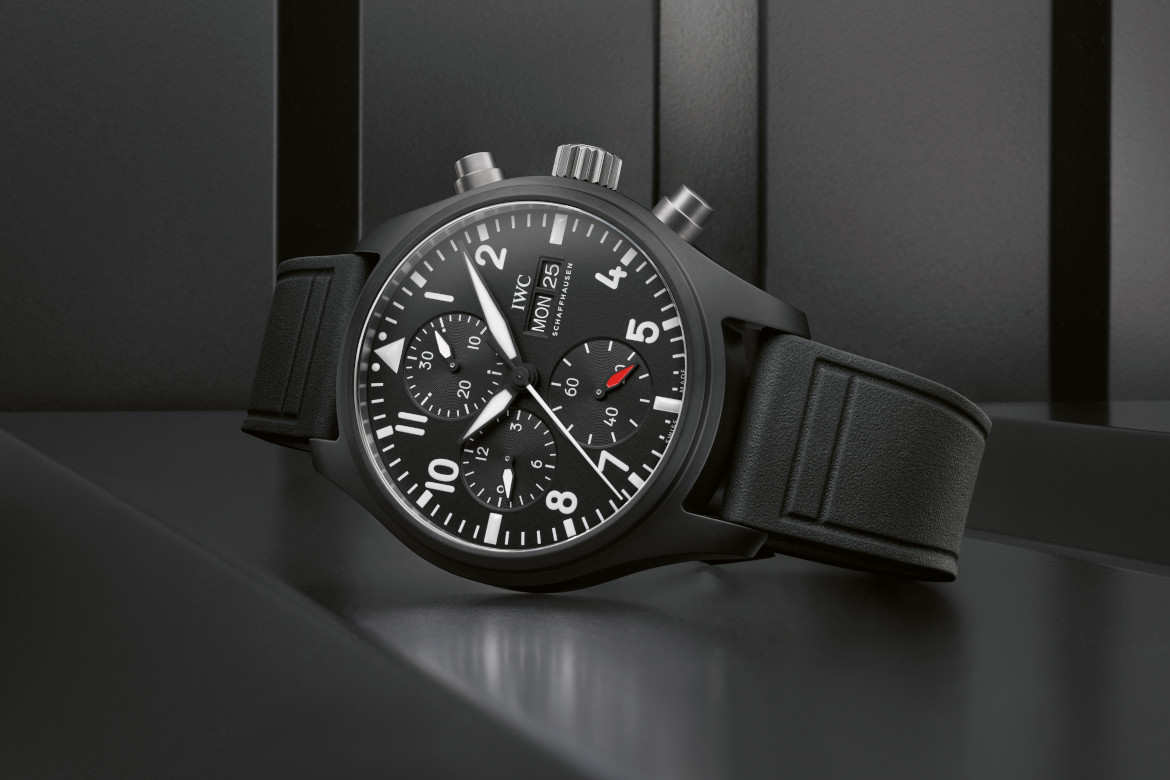
I Pilot’s Watch sono forse gli orologi con i quali il marchio si identifica più strettamente. Il legame tra IWC e l’aviazione è infatti di lunga data poiché risale al 1936, quando fu sviluppato lo “Special Pilot’s Watch” da parte dei figli dell’allora proprietario del marchio, Ernst Jakob Homberger. Avevano entrambi la passione per il volo e sapevano quali caratteristiche tecniche doveva avere un orologio da pilota. Oggi i Pilot di IWC equipaggiano gli squadroni d’élite di diverse aviazioni militari, a partire da quella statunitense e dalla sua celeberrima accademia Top Gun, che forma alcuni dei migliori piloti da combattimento del mondo. All’interno della collezione Pilot, l’icona è senza dubbio il Big Pilot’s Watch. Da sempre riconoscibile per il suo quadrante essenziale e per le dimensioni generose della cassa, 46 mm, da qualche anno è passato ai più “urbani” 43 mm, restando comunque un simbolo del marchio.
La collezione Portugieser è, dal canto suo, una delle più antiche, famose ed eleganti di IWC. Ha la sua origine alla fine degli anni ’30, quando il brand creò per due commercianti portoghesi altrettanti orologi da polso utilizzando movimenti da tasca tipo “savonnette”, che li rendevano più grandi e appariscenti del normale, oltre che molto precisi. La collezione entrò in produzione nel 1939 e da allora è stata una sorta di palestra per il brand svizzero, nella quale utilizzare alcune delle complicazioni più raffinate dell’alta orologeria. Calendari completi e perpetui, tourbillon, cronografi rattrapanti, fasi lunari hanno popolato specialmente negli ultimi anni i quadranti e le casse dei Portugieser, senza però che la collezione perdesse i suoi tratti estetici e funzionali distintivi, risalenti agli anni ‘30: dimensioni di cassa notevoli, numeri arabi sobri ma leggibili, minuteria chemin de fer e lancette a gladio.

Ingenieur è invece la linea più tecnica, quella che già nel nome tradisce la propria vocazione a portare all’estremo soluzioni tecnologiche al servizio della precisione e dell’affidabilità degli orologi. Nasce negli anni ’50, con la mitica referenza 666 il cui movimento era chiamato a risolvere un problema che stava diventando sempre più frequente: la presenza di campi magnetici, sia nell’industria sia nella vita di tutti i giorni, che compromettevano la precisione di marcia degli orologi. Grazie a una gabbia in ferro dolce messa a protezione del calibro, il segnatempo risultava immune da quella influenza nefasta; una soluzione ancora oggi ampiamente utilizzata, non solo da IWC.
La collezione Ingenieur è forse quella che, negli anni, ha subito le maggiori evoluzioni in termini di design, per arrivare oggi alle più recenti referenze presentate a Watches and Wonders lo scorso aprile. L’Ingenieur Automatic 40 si è spogliato del superfluo per tornare all’essenziale, con un movimento rinnovato e un quadrante dall’estetica affascinante, soprattutto nella versione color Aqua, la più richiesta dagli appassionati.
Le collezioni Portofino e Aquatimer sono quelle alle quali da più tempo IWC non mette mano e, ciascuna a modo suo, rimane comunque un simbolo per la marca. Portofino è da oltre trent’anni sinonimo di eleganza, misura e understatement. Casse dal design classico, linee sobrie e pulite, materiali preziosi si abbinano sia a orologi solo tempo dalle forme intramontabili, sia a complicazioni eccellenti come il tourbillon, le fasi lunari e le indicazioni retrograde. Aquatimer nacque invece negli anni ’60, quando gli sport subacquei cominciarono a diventare popolari e chi vi si dedicava aveva bisogno di orologi robusti, precisi e professionali cui affidare la propria vita una volta in immersione. L’Aquatimer ha tutte queste caratteristiche: cassa di dimensioni generose, impermeabilità fino a 30 bar, grandi lancette e indici luminescenti a bastone per una perfetta visibilità anche sott’acqua. Un orologio che dà valore al proprio legame con gli oceani anche con partnership importanti come quella con Cousteau Divers, un programma scientifico che studia gli effetti del cambiamento climatico misurando la temperatura sotto la superficie dell’oceano, combinando i dati provenienti da sensori di precisione con misurazioni effettuate da migliaia di subacquei amatoriali.

IWC ha anche un forte legame con gli appassionati di orologeria italiani e con il nostro Paese. Lo dimostra la recente apertura della nuova boutique a Milano, in via Montenapoleone. Uno spazio che si sviluppa non più in profondità, come nella precedente location, ma in ampiezza, con le teche degli orologi che accolgono il cliente lungo le pareti e in apposite isole. Un grande banco con gli espositori è destinato al primo contatto con gli orologi, mentre un’altra postazione è pensata per i clienti che vogliono approfondire la conoscenza di particolari modelli. Sul fondo, una lounge con tavoli e divani è la zona più riservata della boutique ed è sovrastata su una parete dalla riproduzione del calibro di un calendario perpetuo del marchio. Un salotto, più che una boutique, che declina la perizia elvetica nello stile italiano più raffinato, a rinsaldare il rapporto tra il Paese del Bello e il brand.
Lo abbiamo scritto all’inizio e lo ribadiamo alla fine. Probabile che, indicando nel business plan della F. A. Jones & Co. come mission dell’azienda quella di «combinare tutta l’eccellenza del sistema americano di produzione meccanizzata con il più sapiente lavoro manuale svizzero», Mr. Jones volesse dare vita a una realtà destinata a durare nel tempo. Oggi, dopo 155 anni, possiamo dire che ci è riuscito, forse al di là delle sue aspettative.
Per la gioia e la fortuna di chi fa della bella orologeria una ragione di vita.



